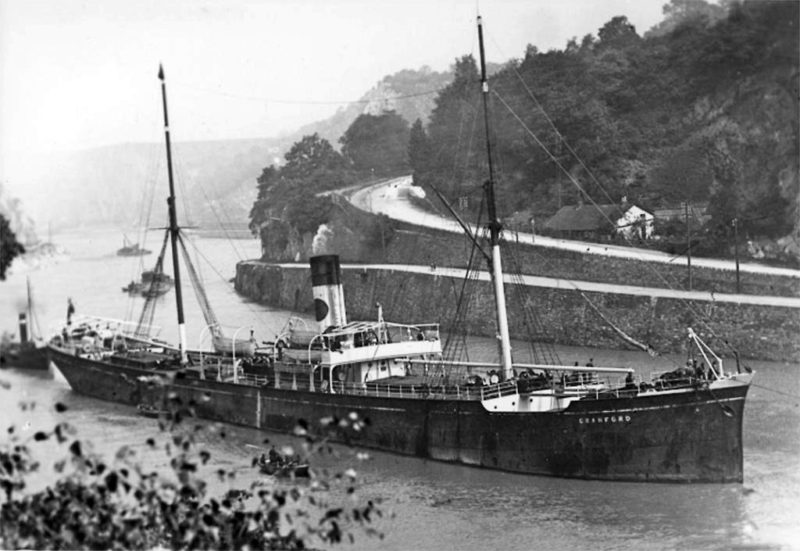
George Pyman (1822-1900) came from a Sandsend seafaring family three miles north of Whitby. At the age of twelve years, he began helping out in the village store at Lythe at the top of a very steep bank from his home at the east side of Sandsend at the bottom. However, he yearned for adventure and left the store to sign on with other local men on board brigs, barques and schooners, rising to the rank of Master at the age of 21 years.
Seven years later in 1850, he gave up the sea and moved to West Hartlepool to set up as a ship chandler with his brother in law Francis English. In 1854, he changed his business partner to Thomas Scurr to act as shipbrokers and colliery agents for the South Durham & Weardale Iron & Coal Company, a huge undertaking in the 1850s stretching from the Durham coalfields to the port of West Hartlepool.
The business prospered and on the death of Thomas Scurr in 1861 it continued as George Pyman & Company. He had seen the great success of Ralph Ward Jackson and his West Hartlepool Steam Navigation Company from the mid-1850s, and ordered his first steam collier from the local yard of John Pile, completed in 1865 as George Pyman of 610 grt. She was intended for the East Coast and near Continental coasting trades. His next coastal collier was built to a new well-deck design by Denton, Gray & Company in 1867.
She was named Lizzie English after his wife’s maiden name, and christened by their daughter of the same name. She sailed on her maiden voyage to Norway with 920 tons of coal under the command of his brother Capt. Thomas Arr Pyman, who commanded many of early Pyman steamers and later became Marine Superintendent for his brother. The next coastal collier of 1868 was named Raithwaite Hall, a stately hall half way between Sandsend and Whitby. This ship was to give 38 years of service to the Pymans before being sold to France, Fenwick & Co. Ltd. and then to Frank Strick & Co. Ltd. for Persian Gulf service.
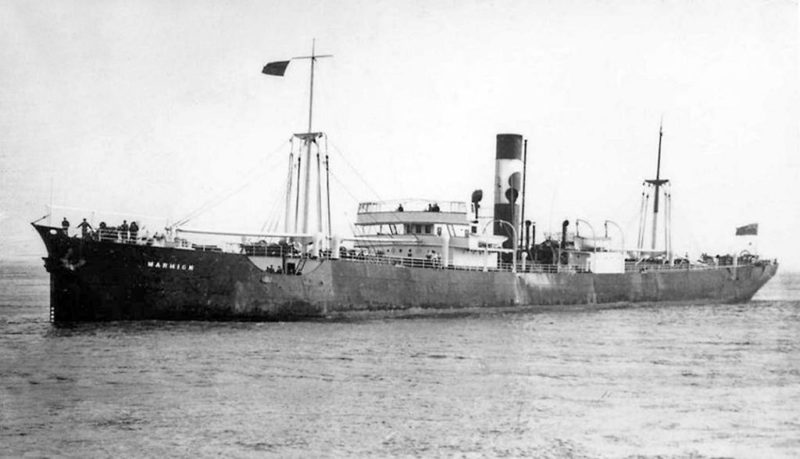
William Gray was a partner in the local shipyard of Denton, Gray & Company, builder of seven coastal colliers for George Pyman. In 1870, the two men, Pyman and Gray, formed the East Coast Iron Ship Insurance Association to the mutual benefit of builder and shipowner, and shortly afterwards Gray was building tramps for Pyman that were large enough to participate in the Baltic trades and in the ‘Eternal Triangle’ trade of coal out to the Mediterranean returning with grain from the Black Sea. Pyman’s association with Gray continued after the latter’s partnership with Denton had ended in 1874, with Gray building many more tramps for Pyman under his own name.
All of these tramps were owned on the 64ths principle of equal shares being rewarded by equal 64ths of the profits of the ships. The Pyman family owned up to 52 shares in some of the tramps built in the 1870s, with the remaining shares held by individuals resident in the North of England, London and even Scotland. George Pyman soon became a very successful shipowner in the tramp trades with his funnel colours of a black disc containing a white ‘P seen in many distant ports.
He was able to purchase a large mansion ‘The Willows’ in Clarence Road in West Hartlepool in 1871, with other members of his family also living nearby. After his death in 1900, the house was purchased by the Gray family, and was finally donated as a Museum and Art Gallery to the town in 1919 to celebrate the safe return of Capt. William Gray from war service.
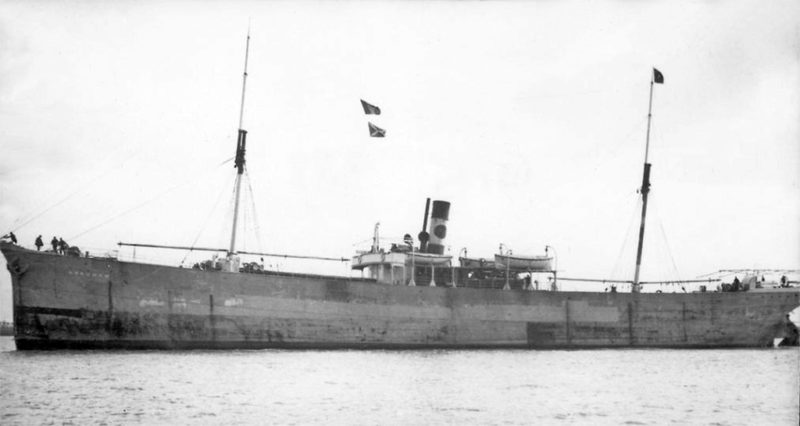
George and Elizabeth Pyman had a large family of seven sons and two daughters, all of the sons being involved in the family businesses:-
Thomas English Pyman (1844), the eldest, who managed the Pyman coal business and was made a partner in 1872, having married Mary Ann Jobling of South Shields in 1865, he died in 1892 aged 48 years.
George Pyman (1848), second son joined the shipping and coal business of his father and remained with it until the end with his death in 1921. He married Ellen Lauder in 1870.
James Pyman (1850), third son, formed a partnership with A. Bell of Newcastle as the shipowners Pyman, Bell & Company. He married Emily Sutcliffe in 1876 and died in 1887.
John William Pyman (1852), fourth son, formed a partnership at the same time with Thomas Watson of Newport as Pyman, Watson & Company. He married Sarah Emerson in 1875 and died in 1929.
Francis (Frank) Pyman born 1854 as fifth son, and Frederick Haigh Pyman born 1856 as sixth son, moved to London to form the company of Pyman Brothers, with an equally big fleet of tramps as the Pyman Hartlepool fleet. They married Florence Lee in 1881 and Blanche Gray in 1884 respectively, making closer links with the William Gray family, and died in 1941 and 1932 respectively.
Walter Herbert Pyman (1858) married Laura Proud in 1881 and died in 1931. He became a farmer and managed several family farms in the area from Sandsend to Whitby, including Moss Brow, Raithwaite Hall, Low Straggleton, High Straggleton, Newholm Green, Greystone, Carr Hall Farm and Dunsley Hall Home Farm.
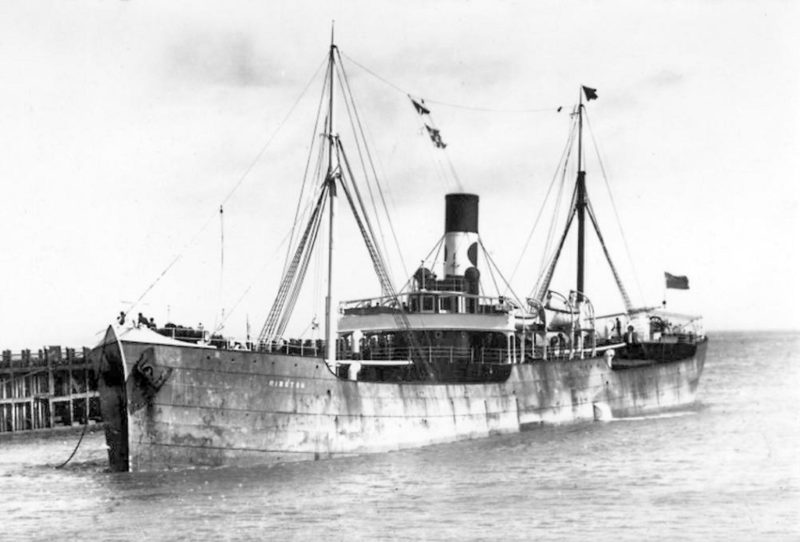
The tramps Moss Brow (1882), Lizzie English (1880) and Florence (1881) were the first ships transferred to the London arm of the family shortly after their completion, with Enfield (1885) the next tramp. She was fitted with the first triple expansion steam reciprocating engine manufactured by the new Central Marine Engine Works of William Gray. Enfield was a well-decker with five hatches and holds and the forerunner of twenty five Gray built steam tramps of 4,000 dwt to 5,000 dwt built for Pymans up to 1905.
These were named after estates, villages and small towns across the North of England and London
- Springfield (1887) South West London suburb
- Cranford (1888) Greater London suburb
- Chingford (1889) London suburb
- Marmion (1899) A Sir Walter Scott historical romance
- Bramham (1890) West Yorkshire village
- Gledhow (1891) North East Leeds suburb
- Harold (1891) Harold English Pyman born 1876 as grandson of George Pyman
- Elmete (1891) Elmete Hall in Leeds
- Lesbury (1891) Village in Northumberland
- Blagdon (1893) Lord Ridley estate in Northumberland
- Ribston (1894) Ribston Hall, Knaresborough
- Rounton (1894) North Yorkshire estate Holgate (1896) London suburb
- Easingwold (1898) East Yorkshire village
- Airedale (1899) Valley of river Aire in Yorkshire
- Raithwaite (1899) Whitby estate near Sandsend
- Sandsend (1899) Pyman home village 3 miles north of Whitby
- Membland (1900) Devon estate near Newton Ferrers, Plymouth destroyed by fire
- Coniston (1901) Village and lake in Cumbria
- Dunholme (1901) Dunholme and Dunelm are the old names of Durham
- Rosebank (1901) Home of George Pyman (2) in Hartlepool
- Holmeside (1901) Holmeside Hall near Lanchester, County Durham
- Cober (1904) Victorian mansion in Scarborough
- Longhirst (1904) Northumberland estate
- Runswick (1904) North Yorkshire seaside village
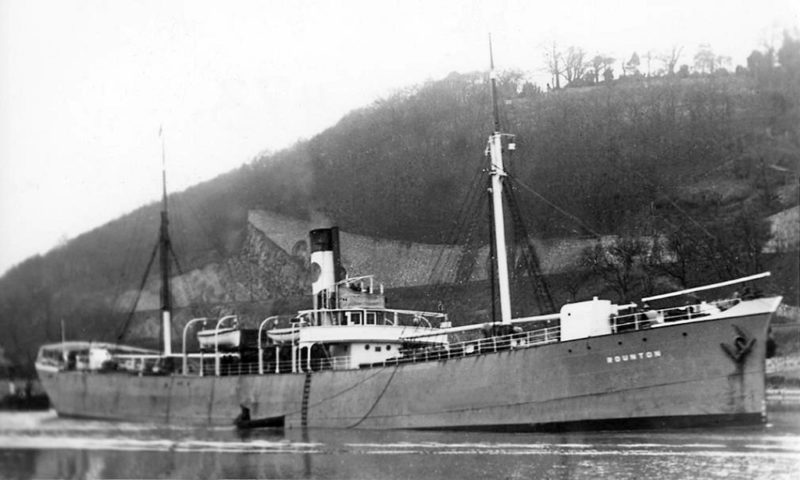
The West Hartlepool and London fleets were transferred to limited liability companies during the 1890s under the Pyman Steamship Co. Ltd. and the London & Northern Steamship Co. Ltd. respectively. A second tramp named George Pyman of 3,550 dwt was built in 1894 but was sold to Danish owners in 1899, and replaced by a third George Pyman of nearly 6,000 dwt from the Bartram yard at Sunderland in 1900, the year of the death of the founder on 23rd November 1900, leaving in his will £285,237, around £30 million in the money of today.
The Pyman fleets at the turn of the century were registered at four ports under four companies as follows:-
Pyman Steamship Co. Ltd., Hartlepool 8 tramps
London & Northern Steamship Co. Ltd., London 16 tramps
Pyman, Bell & Co. Ltd., Newcastle 8 tramps
Pyman, Watson & Co. Ltd., Newport 4 tramps
TOTAL 36 tramps
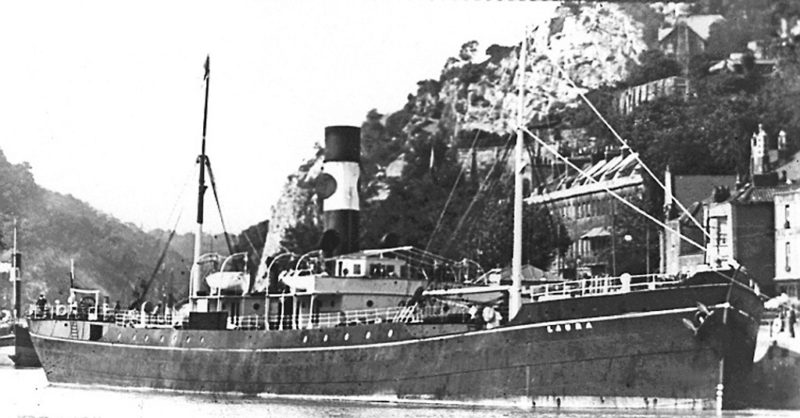
Pyman, Watson & Co. Ltd. used a unique and distinctive nomenclature of ‘Abbey’ names and with different funnel colours of yellow with a black top and a ring of black triangles around the junction between the yellow and the black. Easby Abbey of 5,000 dwt was the largest of the Newport fleet, having been completed in 1892 at the Ropner yard in Stockton, while Llanthony Abbey of 1890 had a very long career under the Italian register after being sold off during World War I. Melrose Abbey was raised at the start of 1907 after being sunk at a French port, and was sold to become the first ship of the Frederick Jones Abbey Line of Newport, who immediately chartered her back to Pyman.
New tramps continued to be added to all four Pyman fleets until 1905, when completions were halted due to the onset of poor trading conditions when 40 tramps were being operated. Quarrydene from Bartrams, Sweethope from Sunderland Shipbuilding Co. Ltd., and Southwaite and Northwaite of 5,500 dwt from Gray were the last to be added in 1905. No further additions were made to the fleets of Pyman, Bell & Co. Ltd. of Newcastle and Pyman, Watson & Co. Ltd. of Cardiff. Competing Greek tramps were laid up during the Balkan War of 1912/13 and freight rates improved enough to build new tramps for the Hartlepool and London fleets during the next five years:-
11 STEAM TRAMPS of 6,500 to 8,000 DWT
William Gray (6) Escrick, Langholm, Normanby, Dunsley, Hackness, Wilton
Richardson, Duck (2) Cloughton, Daleham

Irvine’s Hartlepool (3) Marmion, Eustace, Stanley
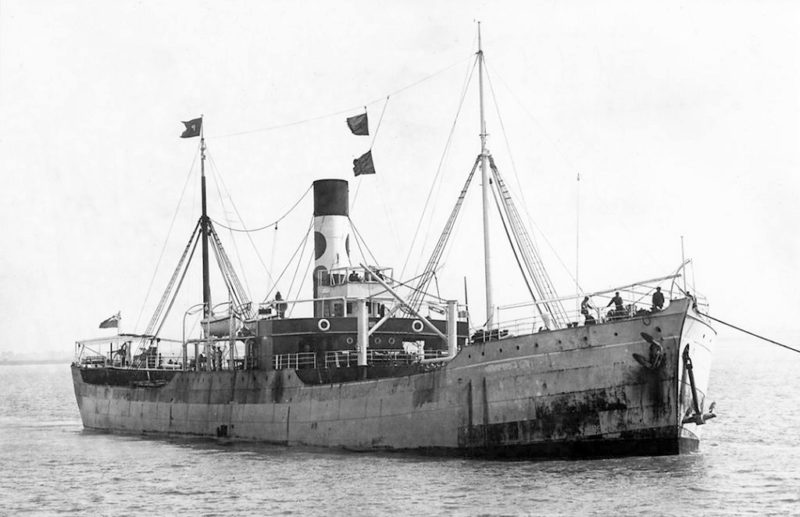
These fine tramps joined one of the largest combined tramp fleets under the Red Duster, and represented the last major Pyman tramp building programme. Many of the tramps had unusual bows known as ‘teapot spouts’. Three marine losses occurred during the years from 1910 to 1913, and thirteen tramps were lost to enemy action during World War I:-
12.10.1910 Cranford was lost in heavy seas off Hartlepool while on a voyage from the Tyne to Italy with heavy Armstrong gun mountings, which shifted in the gale, all crew lost.
10.10.1912 Dunholme caught fire and sank at Bayonne (NJ) while loading oil in barrels, refloated, repaired and sold.
26.8.1913 Holmeside wrecked at Mogotes Point, Cape Corrientes in Argentina while on a voyage from Newport to Puerto Militar with patent fuel.
19.8.1915 Dunsley captured/sunk by gunfire from U-24 48 miles SW of Old Head of Kinsale while on a voyage from Liverpool to Boston with general, 2 lost.
21.8.1915 Cober torpedoed and sunk by U-38 45 miles SSW of The Isles of Scilly while on a voyage from Cardiff to Buenos Aires with coal.
23.2.1917 Longhirst torpedoed and sunk 20 miles East of Cape Bon by U-35 while on a voyage from Phillipeville to Salonica with barley and hay, 2 lost.
13.3.1917 Northwaite torpedoed and sunk 12 miles west of Dingle, County Kerry by U-61 while on a voyage from Sfax and Bona to Dublin with phosphate.
21.3.1917 Stanley torpedoed and sunk by U-24 230 miles NW of Fastnet while on a voyage from Newport News to Cherbourg with grain, 8 lost.
17.5.1917 George Pyman torpedoed and sunk 130 miles NW of Tearaght Island, County Kerry by U-49 while on a voyage from Cuba to Queenstown with sugar.
31.5.1917 Rosebank torpedoed and sunk by UC-73 120 miles North of Benghazi while on a voyage from Port Said to Malta in ballast, 2 lost, Master became prisoner of war.
26.8.1917 Marmion torpedoed and sunk 300 miles SSW of Ushant by U-93 while on a voyage from New York to Bordeaux with oats and steel, 17 lost.
16.9.1917 Sandsend torpedoed and sunk six miles ESE of Mine Head by UC-48 while on a voyage from Barry to Queenstown with general, 3 lost.
20.9.1917 Waverley torpedoed and sunk 33 miles NNE of Cape Ivi, Algeria by U-35 while on a voyage from Newport to Port Said with coal, iron and wagons, 22 lost.
20.12.1917 Eveline torpedoed and sunk by UB-31 when 9.5 miles SW of Berry Head while on a voyage from Barry to Rouen with coal and general.
8.3.1918 Madeline torpedoed and sunk 14 miles ENE of Pendeen L.H. by U-55 while on a voyage from Dieppe to Swansea in ballast, 3 lost.
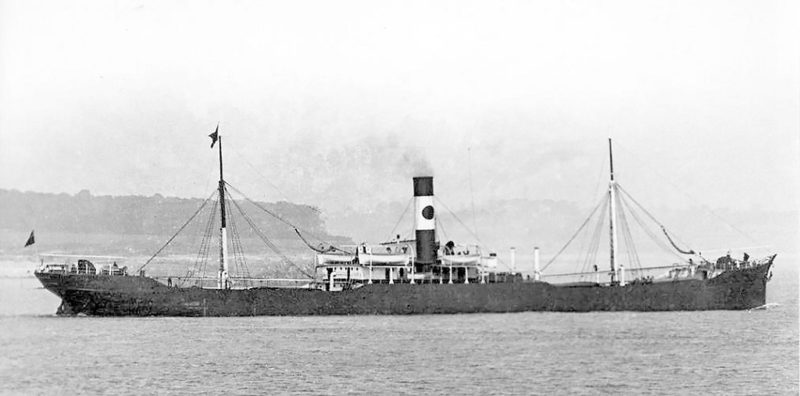
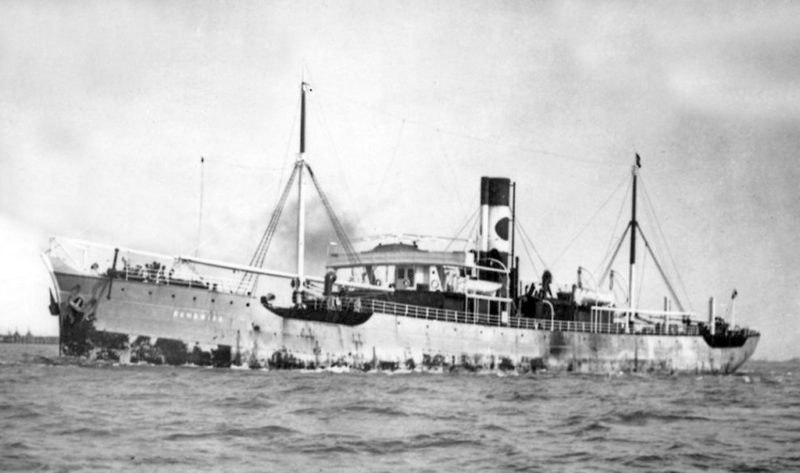
All of the fleet of Pyman tramps had been offered for sale from the start of the war, and continued to be sold for the higher prices then offering, with the last survivors transferred to the ownership of Pyman, Watson & Co. Ltd. Eight tramps were sold to Sir Reardon Smith of Cardiff, five to Hansen Brothers of London, two to Common Brothers of Newcastle, and thirteen tramps as single ship sales to other British owners.
The building cost of Wilton in 1916 was £139,221, and that of two ships managed for the Shipping Controller from 1917 was £140,421 each, War Daffodil and War Flower.
The building cost of a tramp kept on escalating during the ‘boom’ years of 1919 and 1920, with Common Brothers ordering three at £300,000 each, and when the freight market went into severe ‘bust’ in early 1921, big cancellation charges had to be paid. The Pyman tramp, Sweethope, named after a Northumbrian lake, was the only owned ship from 1919 to 1929, and was used in the North Atlantic grain trade from Canada.
This policy was similar to that of Sir William Burrell of Glasgow at that time, in always selling for high prices during ‘boom’, and not rebuilding until new tramp costs had reached reasonable low ‘bust’ levels of £80,000.
Surprisingly, two fine tramps of over 9,000 dwt joined the London fleet of Pyman Brothers Ltd. during 1928 to 1930 from the yard of William Gray & Co. Ltd., family links proving strongest. Parracombe was launched on 22nd November 1927 with semi-clipper bows and forward bulwarks to give some protection against heavy weather.
She was joined by her sister Welcombe of 9,208 dwt in 1930. They had five holds and their hulls were divided by six watertight bulkheads with a steel centreline bulkhead and wooden shifting boards for the carriage of grain. Steam winches and ten derricks for cargo handling, and steam from four single-ended coal fired boilers, one of which was an auxiliary, gave a service speed of eleven knots.
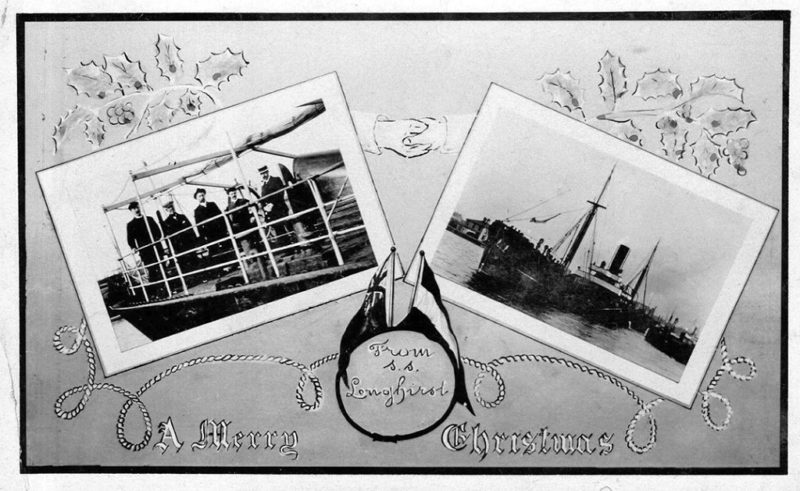
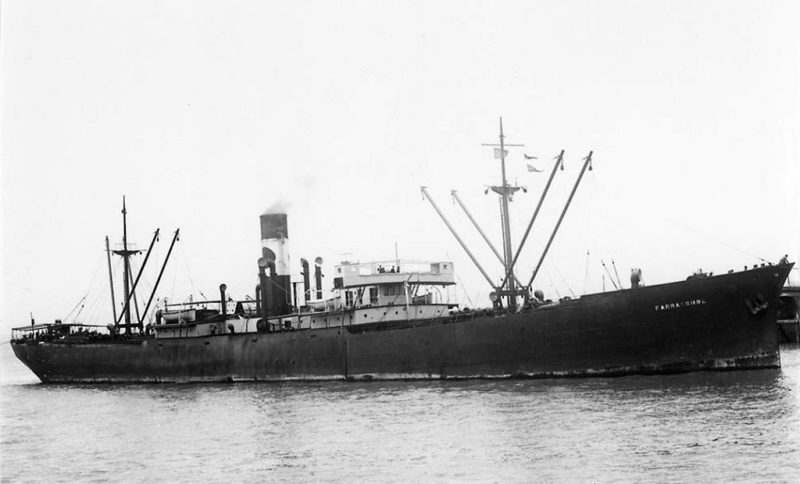
This pair of sisters found employment in the worldwide tramp markets of the Pacific phosphates, Australian, Canadian and Argentinian grain trades, and coal trades from the Tyne and Newport News during the Depression. They were sold in June 1940 to Jack Billmeir and the Stanhope Steamship Co. Ltd. for a total of £170,000, but both were lost to enemy action within a year. Welcombe was torpedoed and sunk on 4th April 1941 to the south of Iceland while on a voyage from Baltimore and Halifax (NS) to the Loch Ewe in Convoy SC-26 with a cargo of grain.
Parracombe attempted an unescorted voyage from Leith through the enemy infested Mediterranean to beleaguered Malta under the disguise of a Spanish steamer. She had reached forty miles from Malta when she was mined and sunk 8.5 miles from Cape Bon, Tunisia with the loss of 30 of her crew of 47, and the remainder were subsequently interned at Bizerta.
The Pyman name was kept alive on Tyneside until the late 1970s with Pyman, Bell & Co. Ltd. continuing as timber merchants, and by Michael F. Pyman as Managing Director of Mercantile Dry Docks Co. Ltd. at Jarrow, the yard that had repaired the fleet in its heyday before World War I.
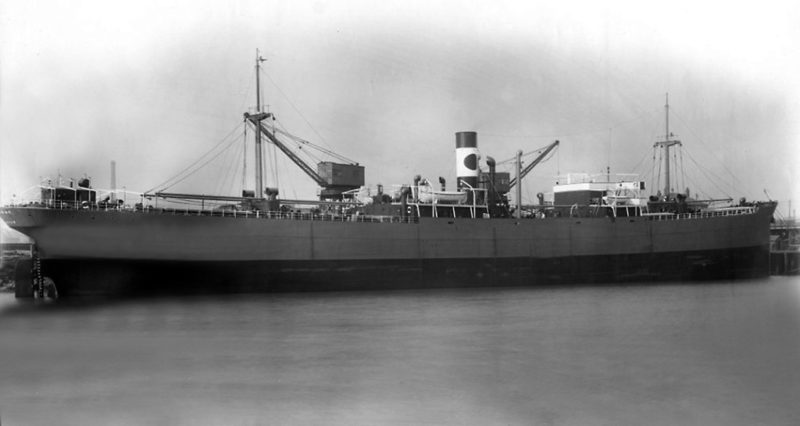
SUMMARY
The Pyman tramp fleet was the biggest in the North of England from 1885 until the middle of World War I, and together with the other Pyman family businesses was spread over six locations of West Hartlepool, London, Newcastle, Cardiff, Newport and Port Talbot. The Pyman, Watson advertisement of 1920 stated that they were steam tramp owners, colliery owners, shipbrokers and foreign coaling contractors. George Pyman is buried in the North Cemetery in West Hartlepool.

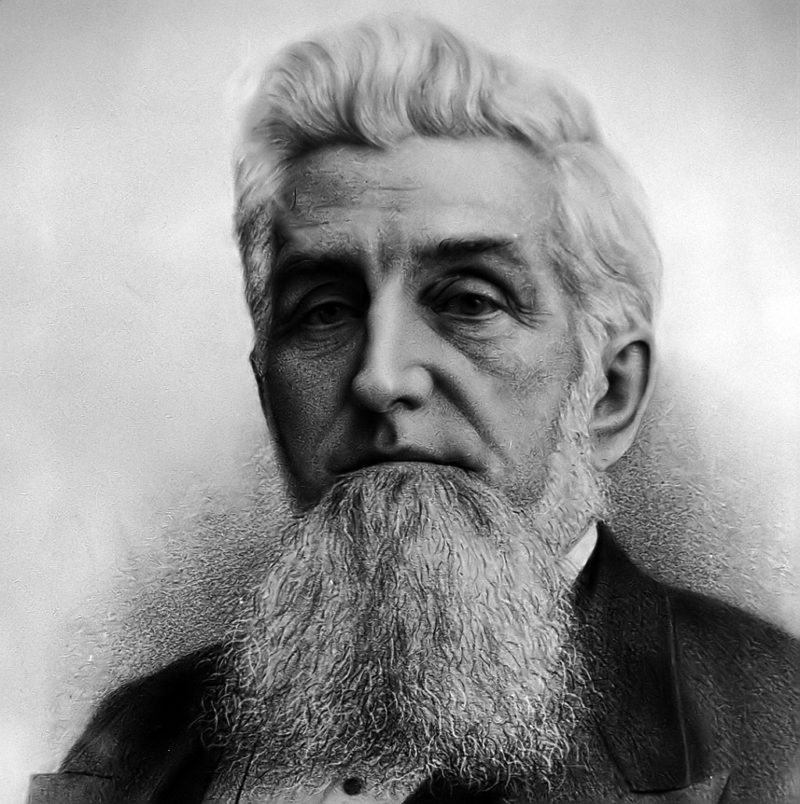
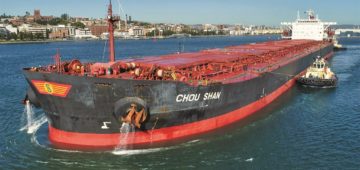



Comments
Sorry, comments are closed for this item